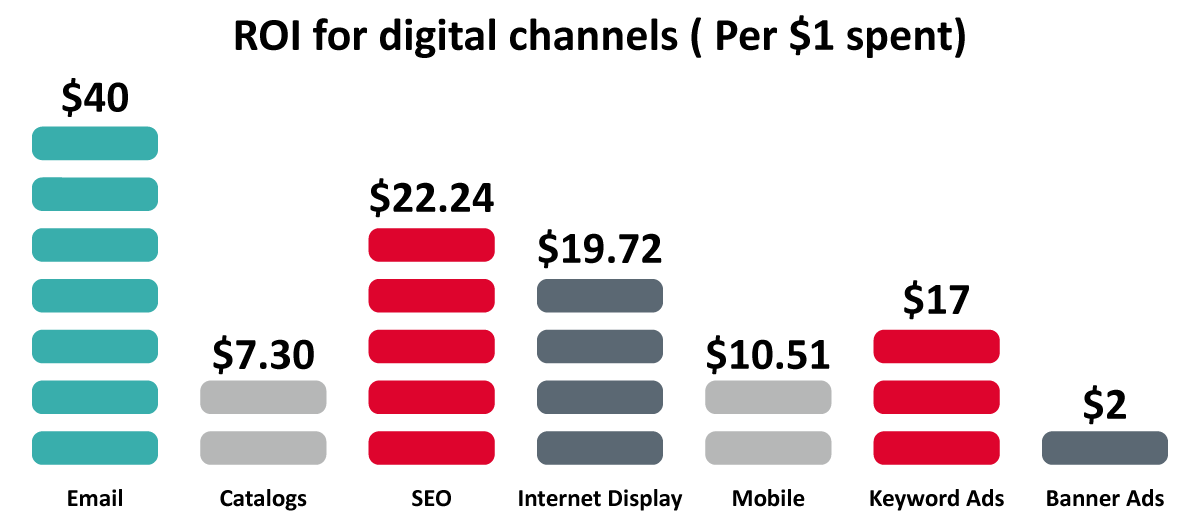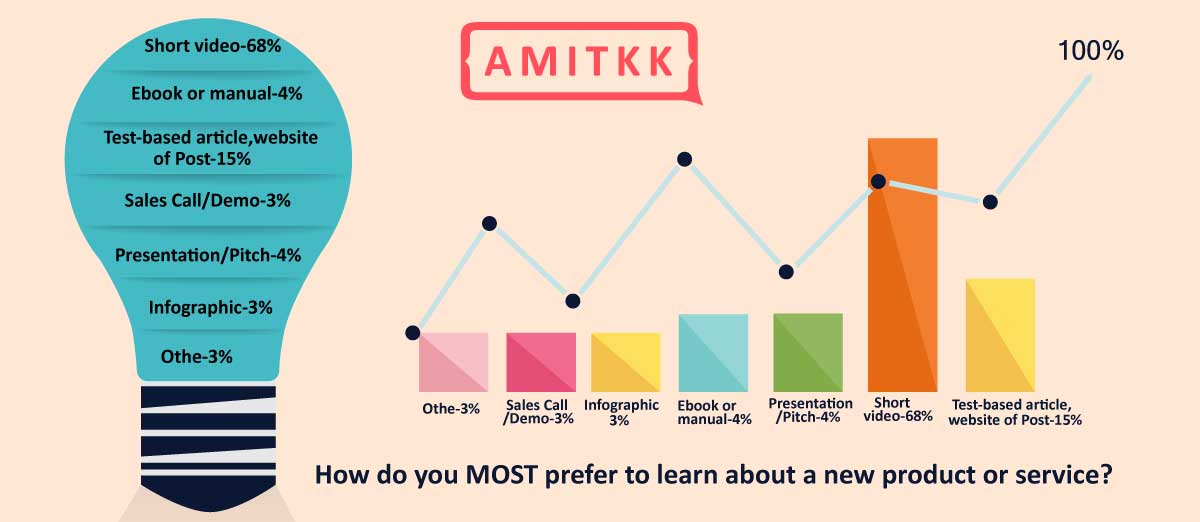Who are Nano Influencers?
Nano-influencers are people who have a sizable but actively involved fan base on one or more social media sites. They typically have less than 10,000 followers and specialize in a specific niche or interest area. Nano influencers, unlike celebrity or macro influencers, have a more genuine connection to their audience, which makes them more effective in driving brand engagement and conversions.
For Brands, working with social media influencers can be an effective way to cut down costs and expand into niche markets and build credibility with consumers. They often charge lower rates than larger-scale influencers, making them an appealing option for smaller businesses and startups. Additionally, because of their smaller following size, Nano influencers tend to respond more frequently to comments and direct messages from followers, making them ideal partners for community-building campaigns.
However, it's important to note that working with Nano influencers requires careful consideration of their values and social media presence. Brands must ensure that the influencer aligns with their brand message and values before entering into a partnership. As long as these considerations are taken into account, working with Nano-influencers can provide significant benefits for both brands and these up-and-coming content creators.
What are D2C Brands?
D2C stands for Direct to Consumer and these brands as the name suggests does not have intermediaries between them and the end consumer. Selling through Online channels, direct stores are some of the best examples. Because of direct selling, the brands collect data directly from their customers, allowing them to tailor product offerings and marketing strategies based on consumer preferences.
By eliminating intermediaries, D2C brands can offer lower prices and maintain more control over their brand image and customer experience. D2C brands often use social media platforms and influencer marketers to target their follower base.
Despite these benefits, D2C brands face challenges such as limited resources for advertising and distribution compared to established retailers. However, with a growing interest in online shopping due to the pandemic, there has been an increase in investment in the sector by both investors and entrepreneurs looking for new opportunities in e-commerce.
Challenges D2C Brands Face
One of the biggest challenges that D2C brands face is the high cost of collaborating with influencers. It is especially true for those who want to work with celebrities or macro-influencers, whose fees can range from thousands to millions of dollars. In addition, because these influencers are in high demand, they often have limited availability and may not be willing to work with smaller brands.
Another challenge that D2C brands face is building trust and credibility with their target audience. With so many options available in the market, it can be difficult for new or lesser-known brands to stand out from the crowd and establish themselves as a reliable source of quality products or services. It is where Nano-influencers come in handy since they have a smaller follower count but are more authentic and relatable than other types of influencers.
Another challenge that D2C brands face is staying relevant and current with changing consumer preferences and trends. Based on customer feedback and changing market conditions, they must constantly adjust their marketing strategies. By leveraging Nano-influencer marketing campaigns, brands can better understand their customers' needs while also promoting relevant products/services through trusted recommendations from real people rather than traditional advertisements.

Benefits for D2C Brands from Nano influencers
D2C brands have been facing challenges with high marketing costs due to the rise of influencer collaborations. However, partnering with these influencers can significantly reduce these costs by up to 200%. These influencers have typically less than 10,000 followers on social media and can be more affordable for D2C brands to work with.
A Nano influencer's unique selling point is that their audience is highly engaged and have a tendency to trust on the recommendations done by them. With a smaller following, they have the ability to build genuine relationships with their followers, leading to higher engagement rates than larger influencers. It means that D2C brands can collaborate with these small influencers and still see significant returns on investment. Brands can increase awareness by collaborating with Nano influencers. Aside from cost savings and high engagement rates, collaborating with Nano-influencers also allows D2C brands to tap into niche markets. The lifestyles or interests of these influencers often attract specific audiences. By partnering with them, D2C brands can reach new customers within these niches while building brand awareness at an affordable cost. Overall, working with Nano-influencers presents numerous benefits for D2C brands looking for creative ways to grow their business through social media marketing.
Advantages of Collaborating with Nano Influencers
Cost & Efficiency
Nano influencers are not only cost-effective, but they also offer greater efficiency than other types of influencers. They have a smaller following compared to macro or celebrity influencers and charge very low amount to promote your product. Brands can work with multiple influencers within the same budget as one macro influencer, making it a more cost-effective option.
Increasing brand awareness and driving sales has been the focus of D2C brands working with influencers. However, working with macro or mega-influencers, especially for startups and small businesses, can be expensive. It is where Nano influencers come in as a cost-effective alternative. It is usually their niche focus that attracts their followers and they are trusted by them for their advice. D2C brands can reach their target audience by partnering with Nano influencers without breaking the bank.
They are affordable and can easily fit into any budget, making them an ideal option for small businesses or D2C brands just starting out. According to recent research, partnering with Nano-influencers can help cut collaboration costs by 200%. It is because they do not have a large following, which means they charge less for sponsored content. Moreover, Nano-influencer campaigns tend to feel more authentic since they have smaller audiences who engage more frequently.
Working with Nano influencers is an effective cost-reduction strategy for D2C brands looking to increase their reach without overspending on influencer marketing campaigns. As the trend toward niche-focused content continues in the coming years, we can expect more D2C brands to turn towards this strategy as part of their overall marketing plan.
Trust
Nano influencers have a strong ability to build trust with their audience, which makes them more effective than influencers that come in other segments. With smaller followings, influencers connect more closely with their followers and often share personal and relatable content that resonates with their audience. Finding the right influencer can help you ride on their authenticity and credibility to connect well with end users.
Engagement rates
The high levels of interaction with Nano-influencers is yet another perk of working with them. Since they have smaller followings, they tend to have a more engaged audience that trusts their recommendations and opinions more than those of larger influencers or celebrities. It makes them an effective marketing tool for niche audiences who trust authentic voices over celebrity endorsements.
Targeted demographics
Lastly, working with Nano influencers allows brands to tap into local markets and communities where these individuals are based. They often have a strong presence within their community and can help build brand awareness among local consumers interested in the products or services offered. By partnering with these individuals, D2C brands can target specific demographics and create hyper-focused campaigns that resonate well with potential customers worldwide.

Maximize ROI
Nano influencers with less than 10,000 followers on social media have become increasingly popular in recent years. Although their audiences are smaller than those of celebrities or macro influencers, they tend to be more engaged, devoted and loyal to them.
Brands that work with them may see an increase in their return on investment (ROI).
One reason social media influencers can be more effective is that their content feels more authentic and relatable to their followers. They are seen as everyday people rather than polished celebrities or influencers who may appear sincere. This genuine connection can lead to higher engagement rates and, ultimately, better brand ROI.
Additionally, partnering with multiple Nano influencers instead of one macro influencer can diversify a brand's reach and message. Rather than relying on one individual to promote a product or service, working with several smaller accounts allows for greater exposure within different niche communities. This targeted approach has proven successful for many brands looking to maximize their ROI through influencer marketing.
How to Reach Nano Influencers?
They are individuals with a small but dedicated following on social media platforms. They typically have between 1,000 to 10,000 highly engaged followers and interact with their content regularly.
Below are the methods to find Nano influencers:
Relevant hashtags
To reach Nano influencers, brands can start by researching relevant hashtags and keywords related to their niche or industry. It will help identify potential influencers already discussing the brand or product.
Marketing platforms
Brands can also opt for platforms which can connect influential individuals with brands based on a variety of factors like demographics, interests, and geographic proximity.
Once brands have identified potential candidates, they should focus on building relationships with them before making formal collaboration offers. It involves engaging with their content through likes and comments, offering exclusive discounts or early access to products, and even sharing their content on the brand's social media channels. Brands can form a long-lasting relation with an influencer if they take the time to get to know them and show genuine interest in the influencer's work.
Engagement rates
When identifying authentic Nano influencers, looking beyond their follower count is important. Instead, focus on their engagement rates and the quality of their content. It will help you to find influencers whose followers are devoted to them and whose opinions are valued by them.
Social listening tools
One strategy for finding Nano influencers is to use social listening tools that help identify individuals who frequently talk about products or services related to your brand. You may accomplish this by keeping an eye on hashtags that are associated with your service, business or product. Another approach is to search for micro-communities on social media platforms where people share common interests or passions related to your brand.
Referral marketing
Brand ambassadors can recommend other authentic creators they know who could potentially become great partners for promoting the brand's products or services. Additionally, reaching out directly through DMs on Instagram can also be a successful approach in identifying potential partnerships with Nano-influencers who may not yet have gained massive popularity but still resonate with the target audience you want to reach.
Interest
Another strategy is to research the influencer's background and interests. Look for individuals who are passionate about your brand or industry, as they will likely be more authentic in promoting your products or services. Additionally, consider working with local Nano influencers who may have a smaller following but are well-connected within their community.
User-generated content
Lastly, don't overlook the power of user-generated content (UGC) from your customers. Encourage them to create posts featuring your brand or product and use relevant hashtags to boost visibility. It can help identify potential Nano influencers who already have a genuine connection with your brand and can become valuable partners in future campaigns.

How to Work with Nano Influencers?
Crafting an Influencer Agreement
When it comes to working with Nano influencers, creating an influencer agreement can help ensure both parties are on the same page. The agreement should outline the scope of the collaboration, including what type of content will be created and where it will be shared. It should also include details about compensation and any potential exclusivity clauses.
Additionally, the influencer agreement should address important legal considerations such as copyright ownership, disclosure requirements for sponsored content, and indemnification clauses to protect both parties from legal action.
Overall, a well-crafted influencer agreement can help establish clear expectations and protect both parties involved in a collaboration. When working with Nano influencers who may not have as much experience with branded partnerships, this document can be a valuable tool for ensuring a successful partnership that benefits all involved.
Preparing Campaigns and Content
When preparing campaigns and content for Nano influencers, there are a few key things to remember. Firstly, it's important to be clear about your objectives and goals for the campaign. Is your goal to raise consumers' familiarity with your company or to boost sales?
It will make you able to create content that actually gets liked and read.
Secondly, consider the audience the Nano influencer will likely reach. Are they primarily active on Instagram or TikTok? What kind of content do they typically create and share? Understanding their audience will help you tailor your content to fit their interests and preferences.
Finally, don't forget about metrics and tracking. Set up measurable goals for your campaign, such as engagement rates or click-throughs, so that you can track its success over time. It will also help you make adjustments along the way if necessary. Adhering to these guidelines will set you up for successful campaigns while working with Nano influencers.
Evaluating Performance & Results
When spending on influencer based marketing, evaluating performance and results is crucial to measure the effectiveness of your marketing strategy. Nano influencers may have a smaller following compared to macro or mega influencers, but they have a more engaged audience that can lead to higher conversion rates. To evaluate performance, it's important to set clear goals and KPIs (key performance indicators) for each collaboration. These goals could be increased website traffic, sales, or brand awareness.
One way to measure success is through engagement rate, which can be calculated by dividing the total number of engagements (likes, comments, shares) by the total number of followers. It’s also important to track metrics such as reach, impressions, and click-through rate (CTR). Using this information, you may better understand your audience's preferences and improve the effectiveness of future partnerships.
In addition to quantitative data, qualitative feedback from influencers and followers can provide valuable insights into your campaign’s success. Get input from your Nano influencer on what went well and where you can improve. You might also conduct polls or surveys on social media and ask their followers for their feedback. By constantly evaluating performance and results when working with Nano influencers, you can refine your strategy over time for maximum impact on your target audience.
Measuring the Success of D2C Campaigns
Measuring the success of D2C campaigns is a crucial aspect of any brand's strategy. It helps identify what works and what doesn't, making it possible to tweak campaigns for better performance. One effective way to measure success is through influencer marketing. Influencers have become essential to direct-to-consumer brands' advertising strategies, as they can help amplify the reach and awareness of products or services.
However, unlike conventional marketing methods, judging the performance of an influencer campaign demands a unique perspective. Brands must set clear goals and KPIs aligning with their overall business objectives before launching an influencer campaign. They can monitor their development in this way to see if their efforts are bearing fruit.
Overall, measuring the success of D2C campaigns requires careful planning and execution throughout every stage of the process. By leveraging influencers effectively while setting clear metrics for measurement, brands can achieve their goals while gaining valuable insights that will inform future strategies for continued growth and success.
Conclusion
In conclusion, collaborating with Nano influencers can be a smart move for D2C brands looking to cut collaboration costs. These micro-influencers have a smaller but more engaged following, which means that their content is more likely to reach the right audience and generate higher engagement rates. It translates into lower costs per impression or engagement compared to working with larger influencers or celebrities.
Moreover, Nano influencers are often more willing to collaborate in exchange for free products or services, making them an affordable option for small businesses on a tight budget. By leveraging their authentic voice and niche expertise, D2C brands can also build trust and credibility within their target community while gaining valuable feedback from their followers.
To reap the full benefits of collaborating with Nano influencers, it's important to carefully select those whose values and interests align with your brand's message and goals. By nurturing long-term relationships with these micro-influencers based on mutual respect and transparency, you can create a sustainable marketing strategy that delivers measurable results without breaking the bank.



















 Seo Company In Delhi
Seo Company In Delhi  Offline Marketing Services
Offline Marketing Services  Ecommerce Website Development In Delhi
Ecommerce Website Development In Delhi  Influencer Marketing
Influencer Marketing  Email Marketing
Email Marketing  Affiliate Marketing
Affiliate Marketing  Digital Marketing In Ahmedabad
Digital Marketing In Ahmedabad  Digital Marketing In Pune
Digital Marketing In Pune  Digital marketing in Bangalore
Digital marketing in Bangalore